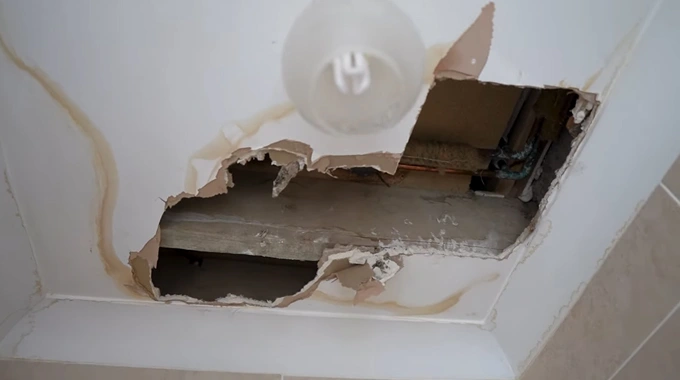Last Updated on March 22, 2023
Water damage is a menacing reality for many homeowners with drywall, the fear isn’t unwarranted. That’s because drywall made from plaster and gypsum-based materials is quite vulnerable when exposed to moisture.
From plumbing problems to flash floods and even leaky roofs, repairing the drywall from these issues can be expensive unless done correctly. Knowing how to repair drywall from water damage is key for keeping costs low.
Before attempting to repair water-damaged drywall, it’s important that you have the necessary materials for a successful job, from joint tape and putty knife to sandpaper and paint.
You also need an understanding of what causes this damage as well as how to recognize when your walls are impacted by unseen moisture. Here we’ll take a closer look at fixing any dampness issues properly to help ensure that all repairs are long lasting.
How to Repair Drywall from Water Damage: A Complete Guide
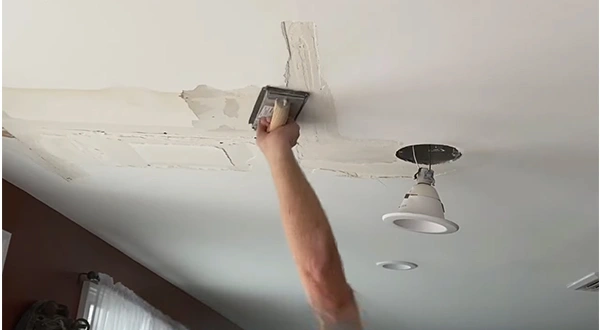
Water damage can severely affect the drywall in your home or office, resulting in cracks and holes. Repairing these damaged areas can be a fairly simple task as long as you have the right materials and patience.
Materials needed to repair drywall water damage:
- Drywall Mud or Compound
- Patching Compound
- Joint Tape
- Putty Knife/Taping Knife
- Sandpaper
- Primer and Paint
Step 1: Preparing the Damaged Area for Repair
When repairing water damaged drywall, it is essential to begin by first preparing the damaged area. This step involves removing any excess moisture from the wall and affected areas with a towel or wet vacuum cleaner.
Water leaks must also be located and sealed to avoid further damage. If necessary, sections of drywall and insulation should be removed in order to assess any covert damages that may have occurred. Once all excess moisture and water leaks have been identified, repairs can begin.
Step 2: Filling in Cracks and Holes
The next step in repairing water damaged drywall is filling in cracks and holes with joint tape, drywall compound, and patches. To prevent any further damage from occurring, joint tape or mesh tape should be used to cover any cracks on the wall.
After taping, a layer of drywall compound should be applied over the surface of all repairs to fill in any gaps created by the water damage. Depending on the size of the hole, additional layers may need to be added until the surface is fully level again.
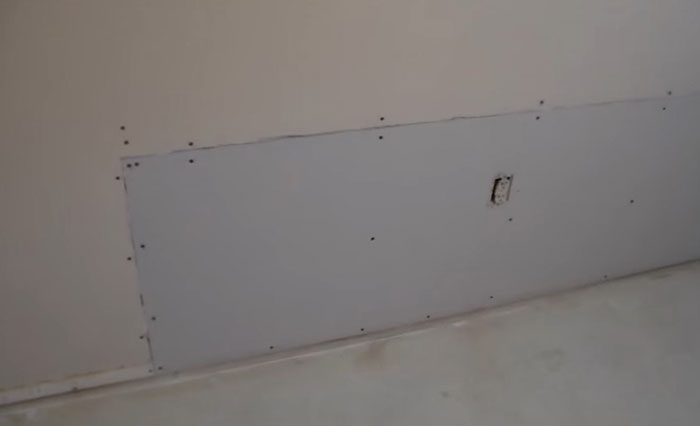
Larger holes will require patches to fill them up before applying several layers of compound until smooth once more. A putty knife or taping knife can then be used to level out any additional bumps or imperfections that may have been created during this process until everything looks even again.
Step 3. Sanding Down Repair Jobs Once Dried
Sanding is an important part of a drywall water damage repair, as it helps even out any uneven surfaces and creates a clean, smooth finish. When sanding drywall after it has been repaired from water damage, coarse-grit sandpaper should be used first to get rid of any bumps or irregularities on the surface.
The coarse grit should then be followed up with fine-grit sandpaper in order to create a smooth finish. Vacuuming up the residue from sanding and wiping down the surface with a damp cloth can help make sure there are no pieces of dust or dirt left before moving on to the finishing touches.
Step 4. Finishing Touches
The last step in repairing drywall from water damage is adding some finishing touches. Adding a primer can help make the paint stick better and enable extra protection against future wear.
Before you paint, consider priming the prepared surface for an extra layer of protection that will help make sure it lasts. With a primed finish, your wall won’t just look great, it’ll be prepared to face whatever life throws at it in years to come.
Then, painting your wall to match its original color (or changing it to something different if desired) will help it blend in with other walls in your home or office and make your repair job look seamless.
Regardless of what color you choose, making sure you use high quality paint that has been designed to withstand moisture will ensure that your repair job lasts for years.
Reasons why Water Damage Occurs on Drywall
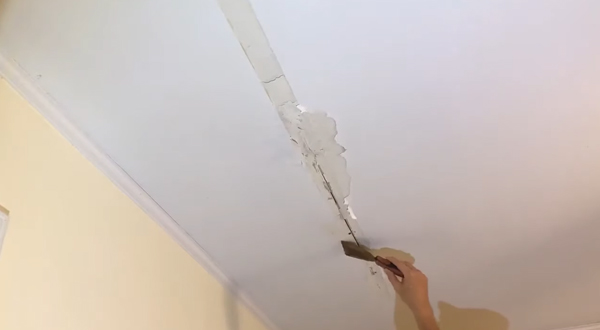
Water damage to drywall is a common problem and can cause considerable damage to the structure of a home or building. We will explore some of the most common causes of water damage on drywall and how they can be mitigated.
1. Leaking Pipes/Appliances
One of the primary causes of water damage to drywall is leaking pipes or appliances. This can happen when either one develops a leak or when they are not properly maintained and allowed to deteriorate over time.
This leakage can lead to constant exposure to moisture which can then cause mold growth and weaken the underlying material, leading to structural damage.
To prevent this from happening, it is important that all pipes and fixtures are regularly checked for any signs of wear and tear, as well as ensuring that any leaks are fixed immediately upon detection.
2. Flooding
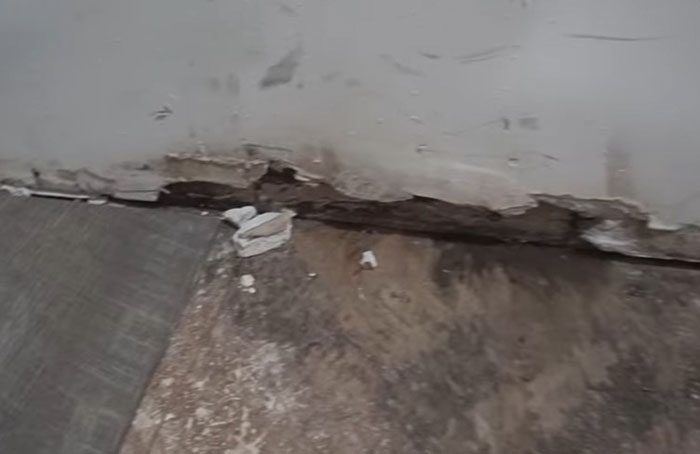
Flooding is another major cause of water damage on drywall. When floodwaters enter a home, they can cause warping and discoloration in the drywall, as well as overall structural weakening due to long-term exposure to moisture.
The only way to protect against this type of event is by ensuring that there are adequate flood defenses in place around your property, such as sandbags or sump pumps. These should be regularly checked for maintenance purposes too.
If flooding does occur, it is essential that you act quickly by addressing any breaches in flood defenses and using appropriate material removal techniques, such as vacuuming up any standing water before further damage occurs.
3. Roof Leaks/Roof Damage
Roof leaks or roof damage are another potential cause of water damage on drywall. If there are any loose valves or pipes in the home, they can leak over time and gradually soak into the drywall. This can lead to warping, swelling, and eventually structural collapse.
Additionally, if any household appliances, such as laundry machines or dishwashers, are not properly maintained or fixed when needed, they may start to leak and cause significant water damage on drywall surfaces in their vicinity.
4. Condensation Issues
Condensation issues on walls may also cause significant amounts of moisture build-up which can then lead to serious problems for adjacent drywall areas too. High levels of indoor humidity can be a major source of discomfort.
By enhancing air circulation through creative solutions such as installing ceiling fans or opening windows, you can reduce condensation caused by excessive humidity levels and enjoy a drier environment indoors.
High levels of condensation in your home may be caused by moisture buildup. In this instance, dehumidifiers work to draw out the excess humidity and can prove a powerful solution when other methods are insufficient.
Signs that Water Has Damaged Walls Even When They Aren’t Visible
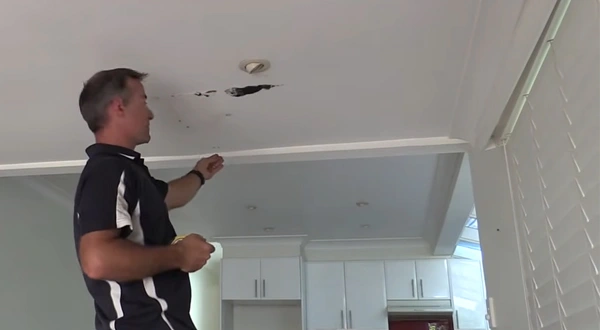
Water damage can be a nightmare for any homeowner. Even if you don’t see visible signs of water damage on your walls, it may still be present and cause problems. We’ll explore some common indicators of water damage even when walls appear perfect.
1. Bubbling or Peeling Paint
One of the most obvious and easily detectable signs that water has caused damage to walls is bubbling or peeling paint. As water seeps into wall cavities, it pushes against the paint surface, causing it to bubble up and eventually come loose from the wall.
It’s important to note that this symptom is usually more visible near corners and edges where water can easily penetrate the surface. If you notice that your paint is starting to peel away from the wall in certain areas, then there’s a good chance that moisture has been entering through these spots over time.
2. Warped Flooring or Baseboards Near the Wall
Another indication that water has impacted your walls is if you find warped flooring or baseboards close by. Water will often travel along the edges of walls and floors, causing them to buckle or warp over time if not addressed promptly.
This occurrence is especially true in areas with high humidity levels where moisture may collect on surfaces more frequently. If you’ve noticed any odd bowing near your walls, it could be a sign of a lurking moisture issue that requires further investigation.
3. Uneven Surfaces On Walls or Ceilings
An uneven texture on ceilings or walls can be a warning sign of water damage. This is because moisture trapped between wall cavities causes the plasterboard to swell and contract, leaving an uneven surface after everything dries out.
This symptom is often accompanied by other telltale signs, such as discoloration and mildew growth which may develop as a result of prolonged wetness within these spaces as well.
Don’t ignore any changes in texture on your walls and ceilings. A qualified expert can help identify the cause of this problem before you move forward with repairs.
Is It Better to Repair or Replace Water Damaged Drywall?

Replacement is generally the best option for dealing with water-damaged drywall. This is because even after being treated, heavily soaked drywall can deform or collapse over time, leading to further damage and even safety concerns.
So, if left untreated, it’s better to replace the affected drywall rather than attempting to repair it.
How Wet Can Drywall Get Before It Needs to Be Replaced?
Drywall isn’t very resistant to moisture, so if the drywall becomes too wet, it needs to be replaced instead of repaired.
While drywalls are able to withstand small amounts of moisture without any issue, they cannot handle medium or extensive amounts of water without sustaining significant damage that would require replacing it altogether.
Does Wet Drywall Always Mold?
Yes, wet drywall will always mold when exposed to an environment with humidity levels above 60%. To avoid this problem, keep indoor environments with a relative humidity of 60 percent or less for healthy living conditions.
You Might Also Like: Is Drywall Sealer harmed by inside mold?
How Long Does It Take for Mold to Grow on Wet Drywall?
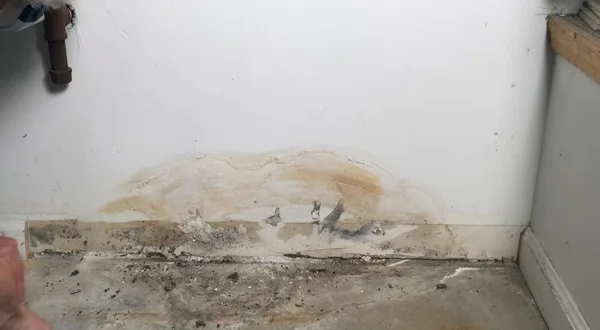
Mold begins growing on wet drywall within 24-48 hours of becoming saturated with moisture, depending on environmental factors such as temperature and humidity levels in the room where the dampness exists.
Will a One-Time Water Leak Cause Mold on the Drywall?
Yes, a one-time water leak can cause mold on drywall if left unaddressed for a significant period of time. The combination of moisture and organic material provides an ideal environment for mold growth.
How Long Does It Take Water to Ruin Drywall?
It typically takes anywhere from 1 hour to 24 hours for enough water damage to occur to cause deterioration in drywall. As water penetrates through the paper layer of the drywall, it begins to erode away at the gypsum core, weakening its structural integrity and leading to delamination and discoloration.
The amount of time it takes will depend on how much water is present, as well as the type of drywall that is used, as different materials offer varying levels of resistance against moisture penetration.
Can You Mud Over Damaged Drywall?
A well-placed putty knife can be a handy tool for restoring drywall after it has been exposed to leakage or other types of damage. Before fixing up the wall, however, moisture must first be eliminated before things get back in order.
Can You Paint Over Water Damaged Drywall?

Painting over water-damaged drywall without priming can create a disaster. To ensure your walls come out looking perfect, make sure to use an oil-based primer before beginning. This will seal in any lingering moisture and provide the foundation for beautiful paintwork.
How Do You Get Rid of Brown Water Stains on Your Drywall Ceiling?
To remove brown water stains on drywall ceilings, you should start by thoroughly cleaning the area with a damp cloth to remove any dirt or dust.
Mix a solution of four parts warm water and one part bleach and apply it to the stained area with a soft-bristled brush, scrubbing in circular motions. Let the solution sit for five minutes before rinsing off with cold water.
What are the Signs of Water Damage on Drywall?
Common signs of drywall water damage can include discoloration, usually in the form of dark or light brown water rings, as well as cracked, bubbling, or flaking paint.
What is the Best Paint to Cover Water Damage?
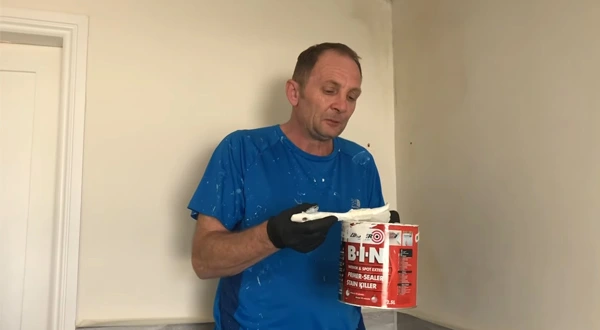
Oil-based paint is generally considered the best option for covering up water damage on walls and other surfaces. This type of paint forms a tougher and more durable barrier than other types of paint so that it can stand up better to the wear and tear of everyday life.
How Effective Is Drywall Spackle in Blocking Water Damage?
Drywall spackle is highly effective at blocking and protecting against water damage. When applied correctly, the material will completely seal any existing cracks or holes to prevent further water infiltration.
Repair Water Damage in Drywall Before It Causes Long-Term Structural Issues
Water damage on drywall is not something that should be taken lightly, as it can cause long-term structural problems in a home if left untreated. Understanding what causes water damage is essential in order to prevent further damage from occurring in the future.

Recognizing the signs of water damage before it becomes too extensive is also important, as this can save time and money down the road. Successfully repairing water damage to drywall requires more than just a basic understanding of the materials.
You need expert insights on when is best for repair or replacement. With these tips and tricks in mind, you should have no problem fixing up your wall like new again.
